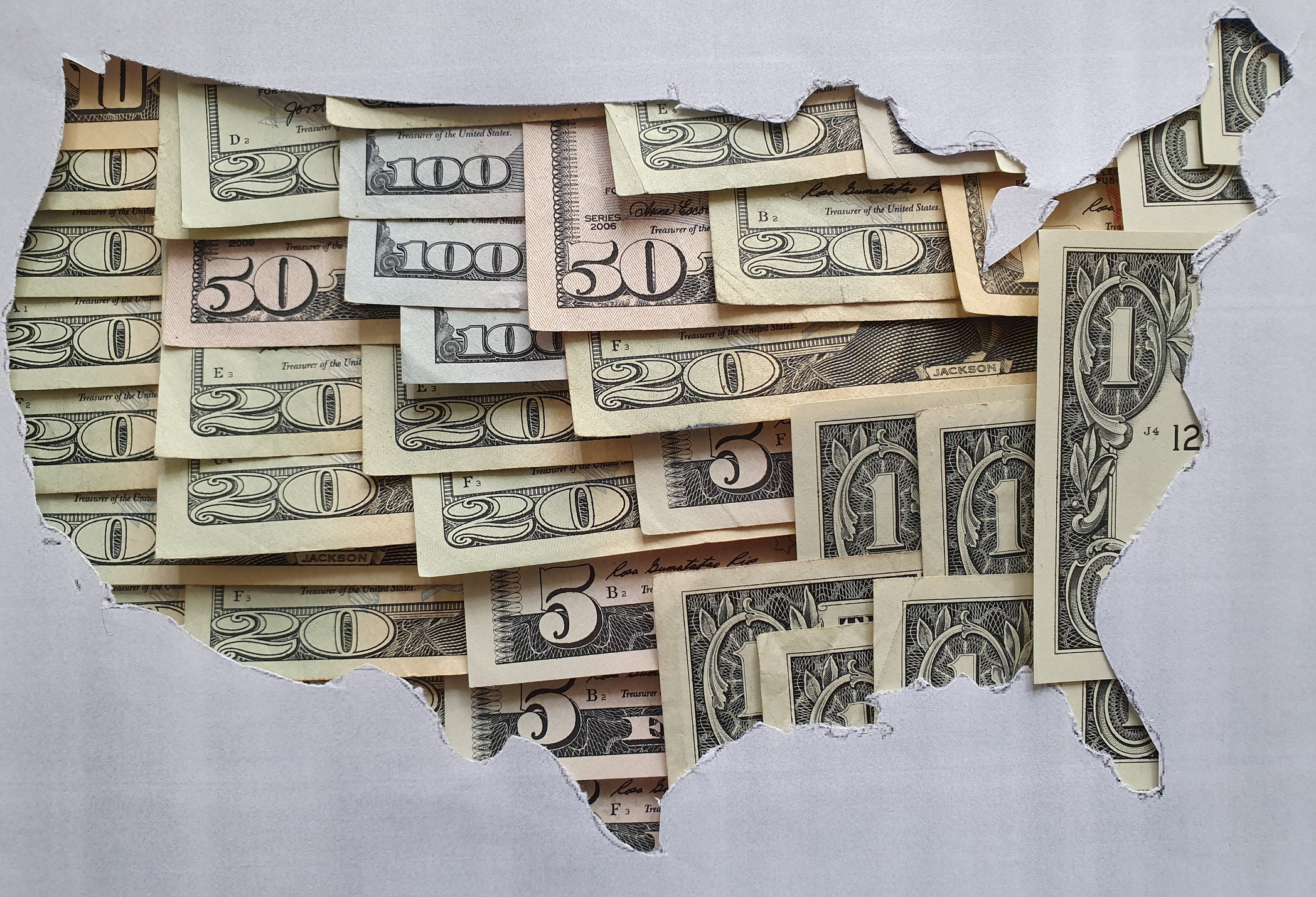Don't Miss the April 1 RMD Deadline: What You Need to Know
April Fool's Day is an important required minimum distribution (RMD) deadline for some older adults and retirees.


Many older adults and retirees are concerned about when to start taking required minimum distributions (RMDs). (RMDs are the minimum amount of money that must be withdrawn from certain retirement plan accounts every year once the account holder reaches a particular age.) These distributions can have significant practical, financial, and tax implications.
However, RMD rules, which apply to several retirement savings plans, have changed.
For example, a few years ago, the SECURE Act raised the age for taking RMDs from 70.5 to 72. But when the SECURE 2.0 Act became law, the RMD age rose to 73. That raised questions for many about when RMDs were supposed to begin.

Sign up for Kiplinger’s Free E-Newsletters
Profit and prosper with the best of expert advice on investing, taxes, retirement, personal finance and more - straight to your e-mail.
Profit and prosper with the best of expert advice - straight to your e-mail.
In any case, when it comes to when a first required minimum distribution is due, April Fool’s Day (April 1st) is an important deadline to remember. Here is more of what you need to know.
When do RMDs start? 2025 RMD start date
According to the IRS, April 1 is a key deadline for some older adults receiving their first required distribution from an IRA, 401(k), or other retirement plan.
- That’s because your first RMD can be delayed until April 1 of the year following the calendar year in which you reach age 73 (if you reach age 72 after December 31, 2022).
- Subsequent RMDs generally have to be made by December 31.
- Delaying the first required distribution can result in two RMDs in one year with the first RMD being taken by April 1 and the second by December 31.
So, for example, if you reached age 72 in 2022, you should have taken your first RMD for 2022 on or before April 1, 2023, and your second RMD by December 31, 2023. That's because the SECURE 2.0 Act, which changed the RMD age from 72 to 73, wasn't effective for 2022.
- Based on that example, RMDs received in 2023 were taxable for 2023 and should have been reported on your 2023 federal income tax return, which was due to be filed last year.
- And fast forwarding: If you received RMDs in 2024, those are taxable for the 2024 tax year (reported on tax returns being filed now, in the 2025 tax filing season).
Note: If you turned 73 last year, in 2024, the IRS delayed your first required minimum distribution (RMD) so that it is due by April 1, 2025. (If you receive your first RMD for 2024 in 2025 (by April 1), the IRS states that you must take your second RMD for 2025 by December 31, 2025.) Both distributions would then be taxable on your 2025 tax return, which is typically filed in early 2026.
Related: One Key Rule for Understanding Your 2023 RMD
Which retirement plans require RMDs?
RMD rules don’t only apply to IRAs and 401(k)s. You must also take required minimum distributions if you have a traditional SEP, SIMPLE IRA, or a workplace 403(b) or 457(b) plan.
Do Roth IRAs have RMDs? Inherited IRAs have their own set of complicated rules. Meanwhile, Roth IRA accounts are not subject to RMD requirements until after the account owner dies. As of 2024, RMDs aren’t required for designated Roth 401(k) accounts.
RMD age in 2025
The SECURE 2.0 Act increased the age at which individuals are required to take minimum distributions from their retirement accounts. Starting on Jan. 1, 2023, individuals are required to take these distributions at age 73 instead of the previous age of 72. This is an important RMD rule change. Additionally, the RMD age will eventually rise to 75.
Delays in the age for taking RMDs raise tax implications and can present practical challenges. The latter can be particularly significant for retirees with lower incomes, who typically use RMDs to cover living expenses.
As a result, it is important to consider how any RMD changes could impact you and plan accordingly.
Avoiding RMD penalties
In the past, failing to meet the RMD deadline would result in a steep 50% penalty. However, with the introduction of SECURE 2.0, the RMD penalties have been reduced.
Now, the penalty is a 25% excise tax on the late RMD or RMDs that do not meet the minimum amount. If you correct the RMD within a specific time (i.e., by the end of the second year after the RMD was due), the penalty can be as low as 10%.
Managing your RMDs: What you can do
It is important to know that required minimum distributions (RMDs) are taxed as ordinary income for federal tax purposes. State taxes may also apply, resulting in potentially significant tax consequences.
For instance, RMDs can push you into a higher federal tax bracket, which could result in a larger portion of your Social Security income being subject to tax. Alternatively, you may pay more for Medicare Part B or Part D if you are in a higher income tax bracket.
If you have concerns about how your RMDs (or failure to take an RMD) will impact your taxes, it's important to consult a trusted financial adviser or tax professional.
The IRS also provides information on RMDs, including answers to frequently asked RMD questions, on its website.
Related
Get Kiplinger Today newsletter — free
Profit and prosper with the best of Kiplinger's advice on investing, taxes, retirement, personal finance and much more. Delivered daily. Enter your email in the box and click Sign Me Up.

As the senior tax editor at Kiplinger.com, Kelley R. Taylor simplifies federal and state tax information, news, and developments to help empower readers. Kelley has over two decades of experience advising on and covering education, law, finance, and tax as a corporate attorney and business journalist.
-
 How Many IRS Commissioners Have We Gone Through This Year?
How Many IRS Commissioners Have We Gone Through This Year?IRS Who were the former commissioners, and why did they resign? Find out how IRS turnover can impact your taxes.
By Kate Schubel
-
 Trump Dials Back Most Tariffs but Targets China
Trump Dials Back Most Tariffs but Targets ChinaThe Kiplinger Letter Wall Street hopes that higher tariffs on most countries are on hold for good. But the trade war between the U.S. and China is heating up.
By Jim Patterson
-
 Which Generation Pays the Most Taxes in the US?
Which Generation Pays the Most Taxes in the US?Tax Burden Polls show that most people feel like taxes are unfair. But which age group bears the brunt of the tax burden in the United States?
By Kelley R. Taylor
-
 Tax Day 2025: Don’t Miss These Freebies, Food Deals and Discounts
Tax Day 2025: Don’t Miss These Freebies, Food Deals and DiscountsTax Day You can score some sweet deals on April 15 in some select restaurants like Burger King, Shake Shack, and more.
By Gabriella Cruz-Martínez
-
 Tax Time: Does Your Kid Influencer Owe Taxes?
Tax Time: Does Your Kid Influencer Owe Taxes?State Tax Some minors are making big money on social media. Here’s how to know if they need to file taxes.
By Gabriella Cruz-Martínez
-
 Trump Plans to Terminate IRS Direct File program
Trump Plans to Terminate IRS Direct File programTax Filing Direct File was piloted last year in 12 states and has since expanded to 25. But some wonder whether the program will last under the Trump administration.
By Gabriella Cruz-Martínez
-
 How Caregivers for Adults Can Save on Taxes in 2025
How Caregivers for Adults Can Save on Taxes in 2025Tax Breaks Caring for your parent or spouse can be stressful, but the IRS offers tax breaks for qualifying taxpayers. Here they are.
By Kate Schubel
-
 U.S. Treasury to Eliminate Paper Checks: What It Means for Tax Refunds, Social Security
U.S. Treasury to Eliminate Paper Checks: What It Means for Tax Refunds, Social SecurityTreasury President Trump signed an executive order forcing the federal government to phase out paper check disbursements by the fall.
By Gabriella Cruz-Martínez
-
 IRS Layoffs Spark Delays, Doubt This Tax Season
IRS Layoffs Spark Delays, Doubt This Tax SeasonTax Season Tax experts say Trump’s downsizing of the IRS is already causing problems.
By Gabriella Cruz-Martínez
-
 States with the Highest Income Tax Rates for Retirees
States with the Highest Income Tax Rates for RetireesState Tax You may reconsider living and retiring in one of these states due to high taxes.
By Kate Schubel